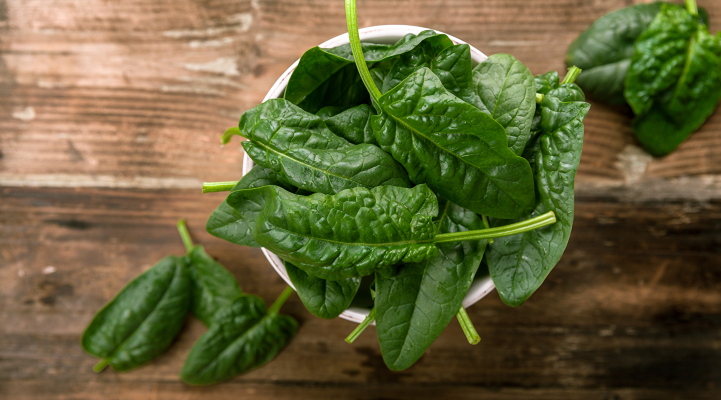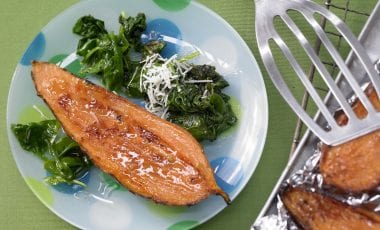When children don’t want to eat spinach their parents will often tell them: ‘It’s good for you and it’ll make you strong – just like Popeye!’ So, just how healthy is spinach and how much iron does it really contain?
Spinach makes you strong

Popeye notably ate leafy green spinach to make him strong, but we certainly wouldn’t recommend his approach as this tasty vegetable is best eaten as fresh as possible and, ideally, should not be heated at all. If you want optimum benefits from its many nutrients, opt for raw or lightly steamed rather than cooked spinach because vitamins are lost when it is heated. According to a study conducted in Sweden, the nitrates contained in spinach promote muscle development; people who therefore eat plenty of spinach and other vegetables containing nitrates really do help their muscles to develop – so Popeye was right after all! Incidentally, Popeye reportedly helped to increase the USA’s consumption of spinach by a third thanks to the ever-popular series of cartoons.
The ‘iron in spinach’ myth
Spinach has long been regarded as a real ‘iron bomb’ but this isn’t actually true, and the myth has been perpetuated for years all because of the accidental omission of a decimal point! For decades spinach was believed to contain ten times more iron than it really does. In fact, 100g spinach contains 3.8mg iron (reduced to 2.9 mg when it is cooked) and not, as initially communicated, 38 mg! Although the error was uncovered back in the 1930s, many people still believe it contains a lot more iron than it really does. But, of course, this doesn’t mean that spinach isn’t good for you. It’s still a valuable source of nutrients, being rich in magnesium and many vitamins.
How much daily iron do I need?
According to NHS guidelines, the amount of iron you need is as follows:
- 8.7mg a day for men over 18
- 14.8mg a day for women aged 19 to 50
- 8.7mg a day for women over 50
The British Dietetics Association provides a list of foods containing iron – note that the amount of iron is significantly reduced when boiled (1.6mg iron per 100g).
Versatile, fresh and tasty
You can enjoy spinach in all sorts of ways – in salads, soup and smoothies. It also works extremely well in pasta and makes a delicious accompaniment to fish or potatoes, nicely seasoned and served with a splash of mayonnaise or salad cream. If you can’t think of a dish to serve right away, the Liebherr BioFresh compartment will keep spinach fresh for up to 2 weeks and, in refrigerators without BioFresh, spinach will stay fresh for 5 days.
For dishes containing spinach, please visit our Recipes section.
What’s your favourite way to eat spinach and what are your favourite recipes containing the iron-rich leafy green vegetable? Get in touch with us on Facebook and Twitter – we’d love to hear from you!

